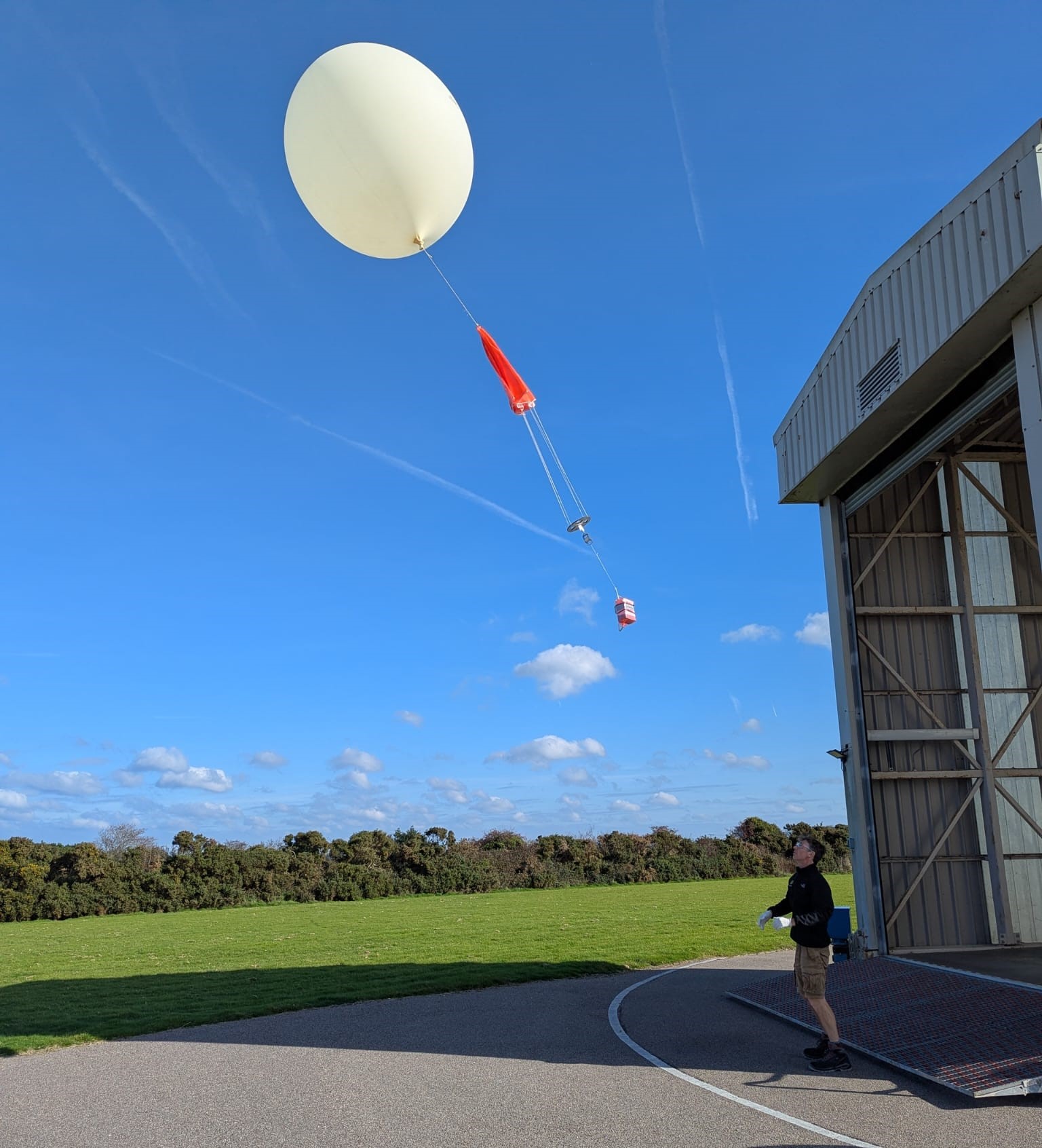World-first radiation data through Earth’s lower atmosphere has been collected in a collaboration between the Met Office, University of Surrey and Netherlands’ forecasters KNMI.
Weather balloon-mounted space radiation probes, developed by the Surrey Space Centre at the University of Surrey, captured their first measurements on 11 November, during what was one of the largest radiation events to reach Earth in recent years.
Following a trial launch of the weather balloons in October, a solar flare – classified as an X5 event – occurred on 11 November and caused a Ground Level Enhancement (GLE). Captured by monitoring equipment at ground level, the GLE triggered, as planned, rapid deployment of radiation monitors affixed to weather balloons launched in unison from Met Office sites at Lerwick and Camborne, as well as a KNMI site in De Bilt.
This is the first time radiation data has been collected from the ground through the atmosphere, and this will be used to validate and enhance radiation models that are in use at the Met Office Space Weather Operations Centre, increasing the UK’s resilience to severe space weather events.
Met Office Space Weather Manager Krista Hammond said: “Data from these launches are vital for our understanding of how space weather impacts radiation levels through Earth’s atmosphere.
“This is the first time radiation data has been collected over such a wide range of altitudes through the atmosphere during a space weather event, and this represents a big leap forward in scientific understanding that will make a real difference in space weather forecasting capability.”

Sensors were launched from Camborne (pictured), Lerwick and De Bilt in October as part of a trial. (Image: Ben Clewer, University of Surrey)
The radiation levels observed at 40,000 feet during the 11 November event reached almost ten times normal background level for a short period. Although this didn’t pose any health concerns, the modelling validation will be crucial in preparing for potential larger events in the future. Historical records, including those obtained through tree rings and ice cores, reveal much more significant events are possible, highlighting the ongoing need for preparedness.
Professor Clive Dyer, an expert in space weather at Surrey Space Centre, University of Surrey, said: “This was the strongest Ground Level Event we’ve seen since December 2006. Neutron monitors around the world measured significant increases and, in conjunction with newly installed UK monitors at Lerwick, Guildford and Camborne, these will enable us to map the footprint of the event across the globe.
“Our sensors have given the clearest picture yet of how rapidly conditions can change at aviation altitudes. We know from historical observations that significantly bigger events are possible, and we need to be ready.”
Professor Keith Ryden, Director of Surrey Space Centre, said: “Because this type of event is highly unpredictable, it’s essential to capture as much data as possible when they do occur. This was our first chance to use the new rapid-reaction balloon sensors in a real event and it worked very well, giving us a ‘3D’ picture of radiation increases across UK airspace for the first time. Our research aims to improve aviation safety, and this is a great step forward.”
The project is part of the SWIMMR programme, funded by the UK government and managed by the Science and Technology Facilities Council, which was a long-term project to improve the UK’s space weather forecasting capabilities. SWIMMR, which stands for Space Weather Instrumentation, Measurement, Modelling and Risk, has been vital for UK forecasting and preparedness in recent years, funding projects around hazard mitigation, GPS protect and innovative research projects.


